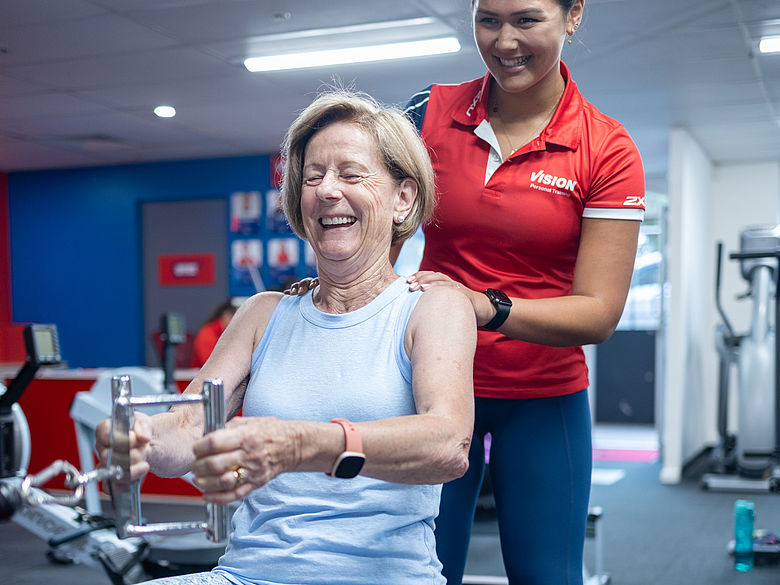Abs are made in the kitchen, whereas your core is used everywhere. When it comes to your core, what is the difference between toning and strengthening?
When thinking about the ‘core’, you are likely to visualise washboard abs trained via multiple sets of crunches daily to maintain. Crunches, sit ups and similar isolated exercises do have their place, but are arguably only necessary for professional athletes and physique competitors. Training the core in this way will absolutely strengthen the muscles, but also make them bigger, thicker and bulkier. This is the opposite desired effect of the general populous.
For most, the best step towards visible tight, toned abs is through nutrition: maintaining a calorie deficit to promote fat loss. Everybody has a six pack, the defining factors in having defined abs is body fat percentage and composition.
Now that you’ve got a better understanding of what it takes to ‘get toned abs’, let’s get to the core of the matter. There is more than meets the eye when it comes to the core. It encompasses the trunk of the body, surrounding the spine. As well as the six pack (Rectus Abdominals) it includes other abdominal muscles, namely the Internal & External Obliques, the Transverse Abdominals (TVA). These work with the Quadratus Lumborum, Erector Spinae and Multifidus muscles to stabilise the spine and pelvis. They keep you upright and are responsible for your posture. These muscles must engage in order for us to lift, carry and move, not just in an athletic sense, but in all your daily activities.
Often overlooked, yet also key in maintaining a strong core are the Latissimus Dorsi, hip flexors and Gluteal muscles. Strong back muscles, the lats work on the shoulder girdle, creating tension through the upper body and assists stabilisation on all key lifts. Furthermore, the lats originate and anchor onto the spine. By creating tension through the muscles that anchor onto the spine, you are able to stabilise and therefore protect the spine bolstering core stability.
Today’s society has a tendency towards sedentary lifestyles. In a seated position, hamstrings, hip flexors and lower back muscles will naturally become overworked and tight. This can lead your abdominals and glute muscles to disengage while being caught in the middle of a tug of war between competing muscle groups. This tightness is why many suffer from chronic back pain and increased injury potential.
Research finds that improving muscular stability and endurance through isometric exercises can have a significant (positive) impact on not only managing back pain and injury. This also enhances athletic performance as the body is better adept at engaging requisite muscles. Being able to engage and ‘turn on’ the core muscles at will helps us navigate away from injuries caused by weakness of the core muscles.
Think less world record attempt at holding a plank for long periods at a time and instead short, controlled and intense intervals (20-30 seconds each), teaching the body correct breathing and bracing technique and cueing. This again differs from the traditional approach of abdominal training of dynamic movements such as crunches. Arguably free weight, compound exercises such as squats, deadlifts, shoulder presses, push ups and chin ups will all have a significant impact and better recruit the muscles of the core.
Breathing is also fundamental for core stability. An effective breathing pattern is the necessary foundation on which to build the core and then, movement. Being able to breathe and brace properly creates intraabdominal pressure, under load, this helps to stabilize the core, much like a sealed can of drink. The best examples of this are powerlifters and Olympic lifters. In these sports, a strong core allows the lifter to handle higher loads safely, again, minimising the chance of injury.
Dedicating and prioritising training the core can reduce acute injury and chronic pain. Best done before the main workout to better prime the body for movement. Beyond pain management, a strong core has direct correlation to better running, better performance in lifting, and life.

